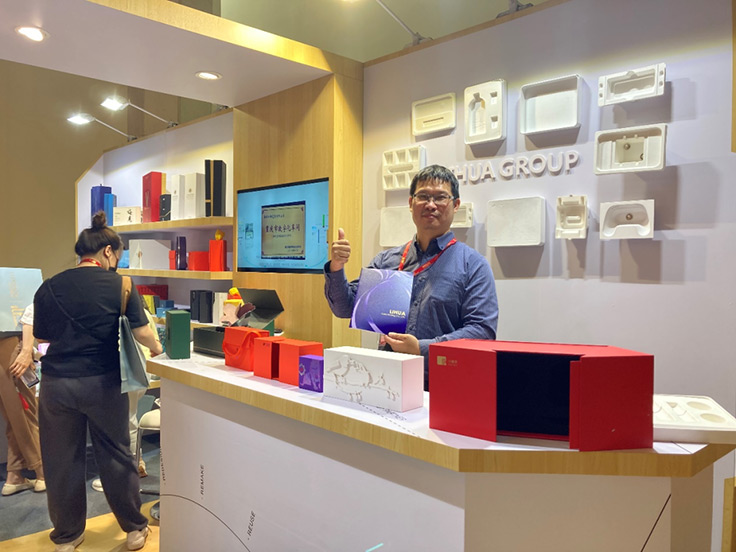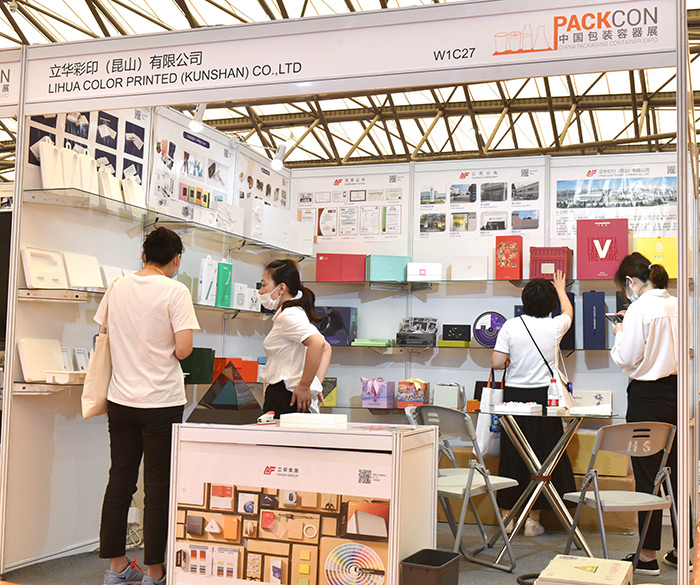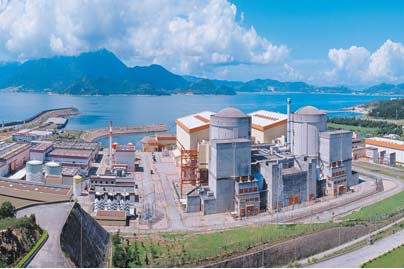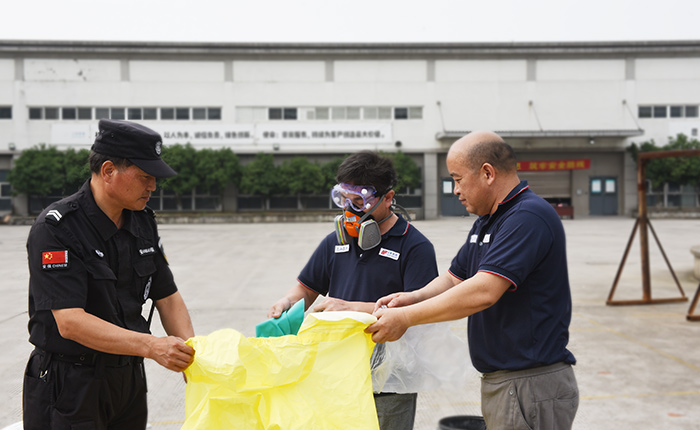Based on the above, we summarize the current problems in the intelligent printing and packaging industry into the following four aspects: policy and standard construction, scale and development area, innovation capability and technology, and corporate synergy industry chain. The corresponding problems are:
1. The construction of policies and standards, the research on industrial policies and standards is still immature, and the industry cannot develop in synergy:
Due to the diversified and fragmented needs of the intelligent manufacturing industry, the industry needs to face work and services in different industries, different environments, and different standards. Although multiple support policies and plans have been introduced before and after, the overall is fragmented and lacks systemicity. Lack of pertinence, it is difficult to form coordinated development, and it is difficult to achieve the expected effect of the government. For example, a total of 5 policy documents on national smart manufacturing were issued in 2018, and no specific timetable and specific supporting policies have been found. Industry centralization and industry planning are not clear enough, and there are still many gaps in industry policy and standard research. The hysteresis of the top-down overall planning of smart manufacturing and the introduction of industry access standards will, to a certain extent, cause blind investment and vicious competition, explore policy gaps, and set policy subsidies to hinder the sustainable and healthy development of the entire smart manufacturing industry.
2. Scale and development area, local government support lacks scientific organization, serious imbalance and homogeneity:
In order to support the development of the local intelligent manufacturing industry, the state has issued relevant policies in recent years. The Ministry of Science and Technology, the Ministry of Industry and Information Technology promulgated the "Twelfth Five-Year Plan for Intelligent Manufacturing Technology Development" and the "Twelfth Five-Year Plan for High-end Manufacturing Equipment Industry." "Development Plan", "Made in China 2025", "Smart Manufacturing Development Plan (2016-2020)", "Industrial Internet Development Action Plan (2018-2020)" and other policy documents; local governments, especially the Yangtze River Delta, the Pearl River Delta and the In the central region, taking advantage of the state's opportunity to promote intelligent manufacturing, it has continuously introduced local support policies to support funds, land and supporting policies. The policy boom has caused a large number of enterprises to flourish, their strengths vary, and the implementation of China's intellectual property protection policy is not in place. Enterprises are unwilling to invest in unsecured research and development, leading to serious technology homogeneity and serious market homogeneity.
3. Weak innovation ability and backward core technology
The key components of intelligent manufacturing in China mainly rely on imports. For example, the machine uses high-performance AC servo motors and high-precision reducers, PLC, CTP, and core components of printing equipment. It still stays at the level of imitation and autonomous in many basic technologies of intelligent manufacturing Weak innovation capabilities and difficult breakthroughs in key technologies have resulted in high manufacturing costs for domestic equipment companies and lack of specific competitive advantages. On the whole, China's intelligent manufacturing industry attaches importance to intelligent production and intelligent services, neglecting intelligent management, intelligent development and design, resulting in a lack of overall experience, making certain core technologies of intelligent manufacturing in the experimental stage, restricting the industrialization process.
4. The collaborative production chain of the enterprise has not formed a joint force between the enterprises, and the product chain is short:
The technical threshold in the field of intelligent manufacturing is relatively high, and it is obviously unrealistic to rely on only some companies to explore new areas. Industrial-grade products have high requirements on digital technology, intelligent technology, network technology, and new materials technology, and the overall research and development takes longer and costs are higher. China's existing smart manufacturing technology is still in the exploration stage, and some companies or institutions have a slight leading edge but are independently closed. Technology research and development are scattered and failed to form a joint force. Enterprises, institutions, and universities of the same technology are repeating research and wasting a lot of R & D funding and research time. However, most enterprises in China are keen on big and comprehensive, perfect and efficient. Some companies with research and development capabilities or more mature products (equipment) have switched to complete machine production. Orderly and detailed industrial chain of manufacturing, sales, integration, and service.
In view of the above four major issues, it is recommended that local governments, industries, enterprises, and scientific research institutions make the following four efforts in the future:
1. Strict market access and standardize market order:
In order to avoid blind investment and vicious competition by enterprises, the government will strengthen the overall planning and supervision of the industry, clarify market access standards, and establish smart product (equipment, software) quality assessment and testing and certification standards. Relevant testing agencies and public service platforms prevent disorderly competition. Through the integration of existing domestic enterprises, we will focus on supporting a number of smart manufacturing equipment and packaging companies with complete industrial chains, core technologies and brands, as well as packaging companies, and eliminate some companies that do not meet market access standards and lack technical support. Encourage enterprises to extend the industrial chain forward and backward, achieve vertical industrial development, and improve the overall level of the development of the domestic intelligent manufacturing industry. Cancel some unreasonable subsidy projects of local governments, increase subsidies for scientific research, subsidies for backward areas and environmental protection subsidies, and actively support market cultivation and long-term development strategies of enterprises.
2. Increase investment in scientific research and improve the level of independent innovation of enterprises:
In order to break through the core technology of industrial development and promote the development of high value-added products in the industrial chain, we should increase the investment in technology research and development of smart products, and set up special funds to focus on the advancement of key technologies such as artificial intelligence technology, software control, and material application technology R & D. Strengthen policy support for independent brand manufacturers and users, and accelerate the localization of key core components and core equipment. Strengthen technical cooperation, strengthen the support for industry-university-research cooperation in the field of intelligent manufacturing, and especially provide policy support to enterprises implementing industrialization in market sales and social promotion.
3. Strengthen the construction of industrial alliances and expand the industrial chain:
Actively guide industrial design companies, artificial intelligence technology providers, new material research and development enterprises and institutions, and intelligent service application providers to form industrial alliances, strengthen technical discussions and exchanges, and jointly promote the development of intelligent manufacturing technology and industry standard formulation. The intelligent industrial technology alliance for printing (including pre-press), India-China and post- India will be established step by step to promote the construction of a platform for the development of intelligent manufacturing and promote the sustainable and stable development of the industry. Establish a public technical service platform, integrate national and global superior resources, realize effective division of labor and reasonable connection of innovative resources, implement intellectual property sharing, accelerate the commercialization of scientific and technological achievements, and improve the overall competitiveness of the industry.
4. Strengthen international cooperation and open up international markets
Encourage mergers and acquisitions of foreign companies with brands and core technologies (such as Japanese and European SMEs with core technologies), establish overseas industrial parks and overseas economic and trade cooperation zones in countries and regions with conditions, carry out resource and value chain integration, and strengthen internationalization Management capabilities to achieve a strong alliance. Actively explore emerging markets in smart manufacturing markets such as Vietnam, Thailand, India, and South America and Africa, and diversify the export markets for smart products. Encourage smart manufacturing companies to establish international headquarters in the free trade zone, accelerate the company's groupization and international development process, and improve the global strategic layout.
The above is mainly to explain the overall situation of intelligent manufacturing from theory to practice. In the end, the author shares the experience and experience of Lihua Group's intelligent manufacturing implementation in Lihua Group's intelligent practice and construction, hoping to bring some to its peers. Learn from and help.
Six, Lihua Group's practical positioning in intelligent construction
In the process of advancing intelligent manufacturing, Li Hua always follows the principle of dual thinking of perceptual and rational: the principle of truth-seeking, truth-seeking, and scientific advancement.
In the practical process of promoting intelligent manufacturing, Lihua has formed the "Lihua Intelligent Manufacturing Concept" from four aspects.

[Building Lihua's Intelligent Manufacturing in Four Levels]

 English
English 中文
中文 日本語
日本語 한국어
한국어 français
français Deutsch
Deutsch Español
Español italiano
italiano русский
русский português
português العربية
العربية



















